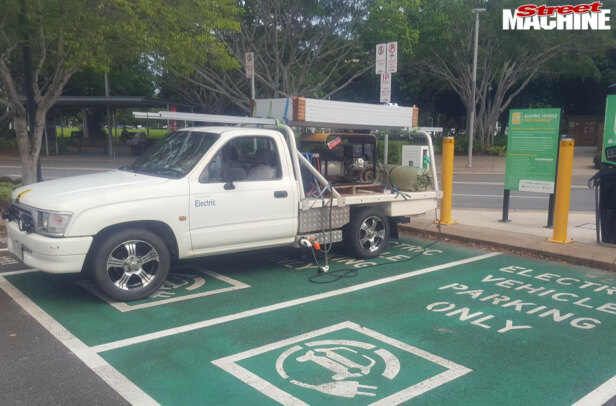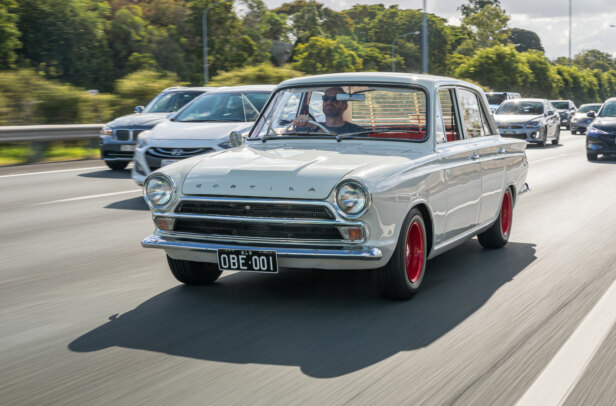WE’RE about to reach a turning point, mark my printed words. In a few years – maybe a decade-and-a-bit – you won’t be filling your car with fossil fuels, but electricity. And you won’t care, because the car you’ll have then will out-accelerate, out-handle and out-range whatever it is you’ve got now.
Before you scoff, take a moment to check out a series of videos of an electric car nailing the 0-100km/h sprint in 1.5 seconds. It stages, emits a loud whir and then decimates the metric tonne in half the time it takes to say ‘Mesozoic bio-matter no longer required’. Sure, the brutal nature of a sub-two-second 0-100km/h time is hard to convey with a fish-eye camera lens, but it’s clear the car is not sitting around.
Thankfully it isn’t a worked Mitsubishi i-MiEV clown car; hell, it isn’t even a hopped-up Tesla Roadster. It’s a ‘Formula Student’ race car called Grimsel, built by Team AMZ, a bunch of Swiss university undergrads. It’s not pretty – it presents like a Formula Ford with primordial dwarfism dressed for a Halloween party – but it’s opened my eyes to the possibilities of our very-near future.
Despite their goofy presentation and distractingly Swiss sing-song accents, the boffins involved are clearly pretty talented; most of the car is bespoke aside from the electricals and the cute little Hoosier slicks. The outer skin is a carbonfibre sandwich encasing an aluminium honeycomb, and the entire monocoque weighs just 14kg.
At 110km/h, the downforce created by the front and rear wings are (and I quote directly from the video) “such high, that we could theoretically drive at the ceiling!” The active aero, meanwhile, is controlled by “the flappy paddles on the steering wheel”.
Unlike a regular formula race car, which is generally just an excuse to strap a small, overpaid man to an engine, the Grimsel’s main component is the battery storage bank, comprising 448 lithium polymer cells parked straight up its guts.
The engines, of which there are four, are actually part of the wheel hubs, and pump out 50 horses a piece. Not so impressive? Did I mention that they weigh 3.4kg each? Affixed between each engine and wheel is a reduction-drive gearbox with a single planetary gear designed to reduce the 19,200rpm operating speed down to something useful, while the braking system recovers around 30 per cent of the energy normally lost as heat in an accumulator system, for re-use later on.
Even the suspension is the same high-technology magnetic dampers found in the HSV GTS, Corvette Z06 and Mustang Shelby GT350.
Until I watched the videos put together by the AMZ guys, I was dubious that their machine could do anything other than lay down a sick 0-100km/h time, but its creators go on to explain that it can do 22km in ‘race mode’ (I’ll assume that means at full beanage).
The car is named after the Grimsel Pass in Switzerland, and the mind boggles at the sheer violent force with which this machine could slay such a windy mountain road. And here’s my point.
My wife and I both drive V8-powered dailies; me a VY SS and her an LS2 WM Caprice. With fuel still relatively cheap and Holden parts plentiful, we’re enjoying our slice of the V8 pie while we can. And despite their advancing ages, both cars are nice things to be in, do everything we ask of them, and when they break it’s not a financial catastrophe.
However, of most importance to me is that when I mash my size 11 hard on the loud pedal, the result is a pair of tortured rear treads and everything behind me vanishing quickly. Sadly, when our Holdens hit their use-by date, I’m currently at a loss as to what to replace them with. After all, post-2017 a stout, rear-wheel-drive V8 Holden will be nothing but a fond memory.
I don’t mind big, brutal imported sedans, but they start out expensive and by the time they’re cheap, they’re a maintenance liability; if I bought one, I would need to start saving now to replace a water pump in 2026.
Diesels are supposed to be pretty good, but they smell; I hate being behind them and I’d feel embarrassed to be sooting up the road users behind me if I owned one. And with turbo petrol technology going the way that it is, diesels are fast becoming irrelevant.
And as for SUVs? Well, if I ever buy a Prado, you can be sure that I’ve actually been replaced by an evil robot replicant. I like camping like I like coffee enemas, but I do like going around corners, and when I fang it I like to stay upright.
So after following the feats of the record-breaking Grimsel electric car, it occurred to me that when it comes to daily drivers, I’m like 98 per cent of the snooze-heads on the road – I don’t actually care what powers it, just so long as it does what I need it to. Which in my case is look boss and get up and boogie when required.
Like a lot of you, I’ve got a classic in the shed (or two) and I’m not about to suggest that they be re-powered by anything other than good old fossil fuels; they don’t get out much anyway and when they do it’s an occasion, not a commute.
But if someone can deliver me an electric car that slays twisty corners, destroys Prado owners attempting to beat me to the merge and is equally adept at idling in city traffic as it is at eating 1500km to Alice Springs at a moment’s notice, then I’m keen. And if it can swallow a couple of kids and all their shit, sign me up for two – the wife is more than on board.
We will both sign on the dotted line one day soon; if you like your motors like I like mine, you may well too. Until then though, we will continue to consume dead dinosaur juice with impunity – and if I leave now, I’ll make it to Alice in time for dinner.




Comments